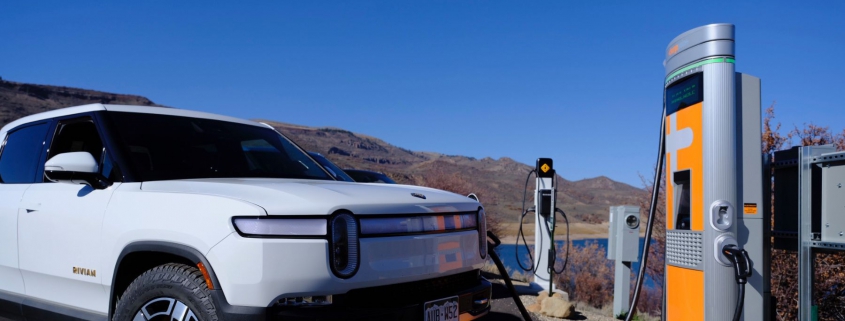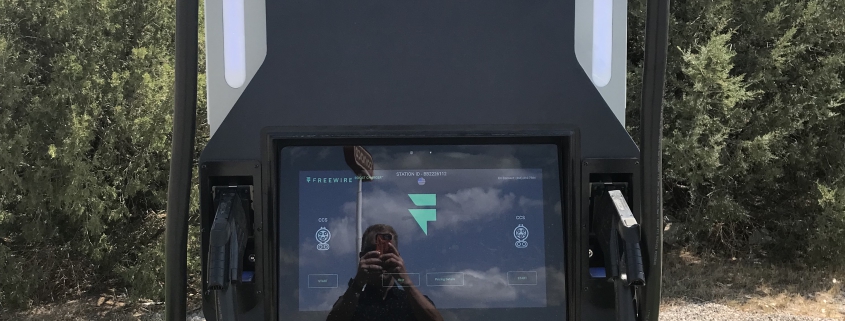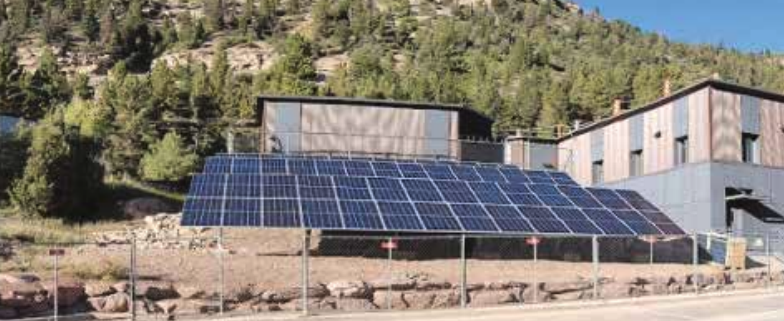Most drivers traveling to or from Denver through the northeastern plains of Colorado might approach exit 180 on Interstate 76 without much thought, but for electric vehicle drivers traveling the route, that’s about to change. Thanks to Highline Electric Association and its partnership with Tri-State Generation and Transmission and the Colorado Energy Office, the Wagon Wheel Conoco at exit 180 in Julesburg is home to the second-in-the-state single-phase DC fast charging station, making it an invaluable stop for new EV technology.
The FreeWire® Boost™ Charger 150 is located at an ideal place for EVs to hook up for a fast charge when driving along I-76 to or from Denver. The interchange is 180 miles from the Denver metro area and the placement couldn’t be more perfect, as the average range for most EVs is over 200 miles.
Highline Electric Association Manager of Member Services Tad Huser said this charger is designed for public use and this location on the interstate 76 corridor bridges the EV fast-charging gap between Fort Morgan, Colorado, and Ogallala, Nebraska.
Traditional EV fast chargers run on three-phase power, which can be a less common setup in rural areas due to the infrastructure demands and upgrades often needed to install a typical EV fast charger.
“The FreeWire Boost Charger technology enables public EV fast charging at gas stations, convenience stores and restaurants that run on single-phase power,” Huser stated.
Now for the specs: The Boost Charger 150 unit has an on-board 160-kilowatt-hour battery that can impart up to 150 kilowatts of power to a single user. If both charging heads are being used, the max power to each charging head is split and can charge at 75kW max each. Both charging heads are the CCS connector that is quickly becoming the international standard outside of Tesla’s proprietary connector.
The fees at the station are $0.25 per kWh and there is a parking/idle fee of $0.10 per minute after 30 minutes of idle (plugged-in) time to incentivize unplugging and moving along once charging is complete. The station has a credit card terminal where users can swipe to pay. Users may also scan a QR code on the unit that takes them to the EV Connect mobile app where they can pay via their phone as well. The next time you need to pull over for “fuel,” make this stop for new EV technology.










